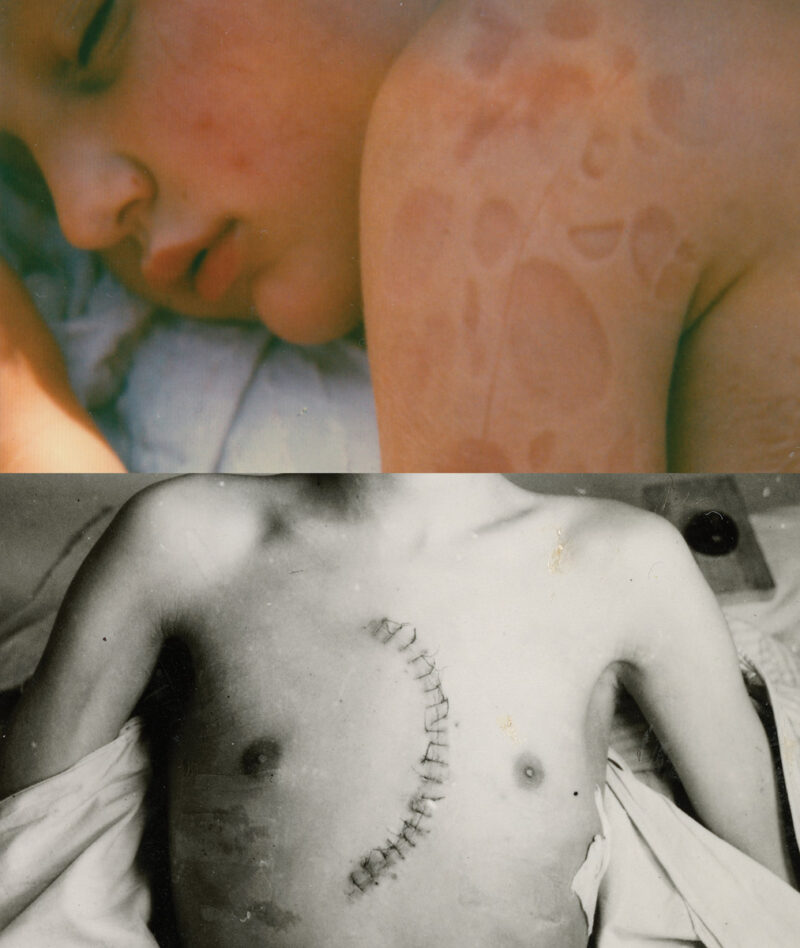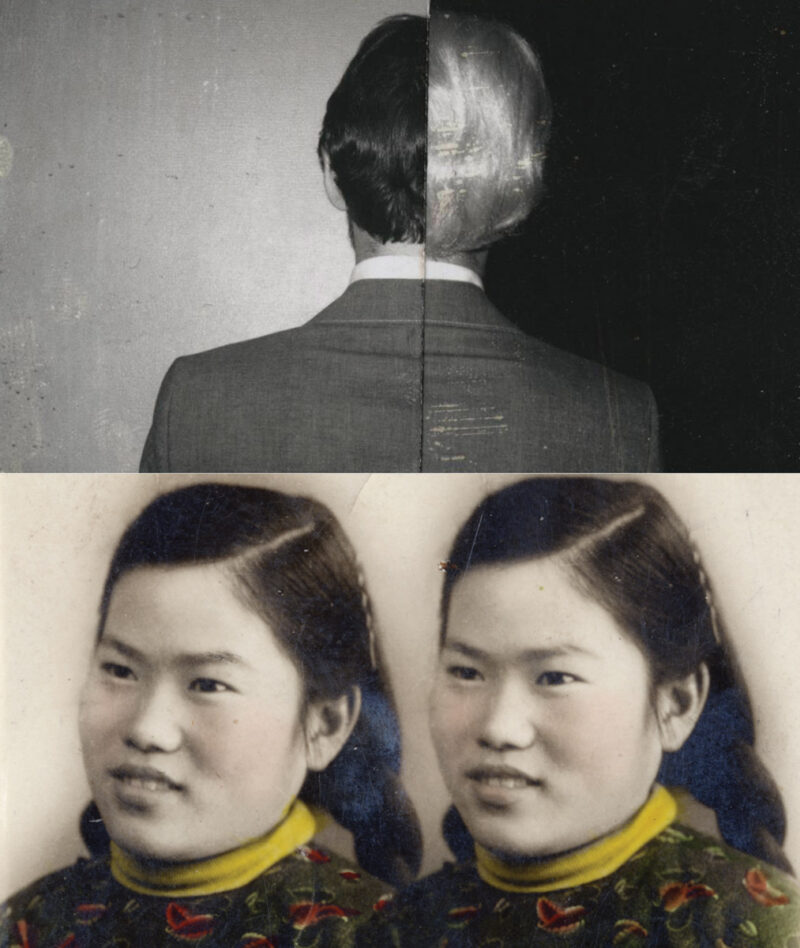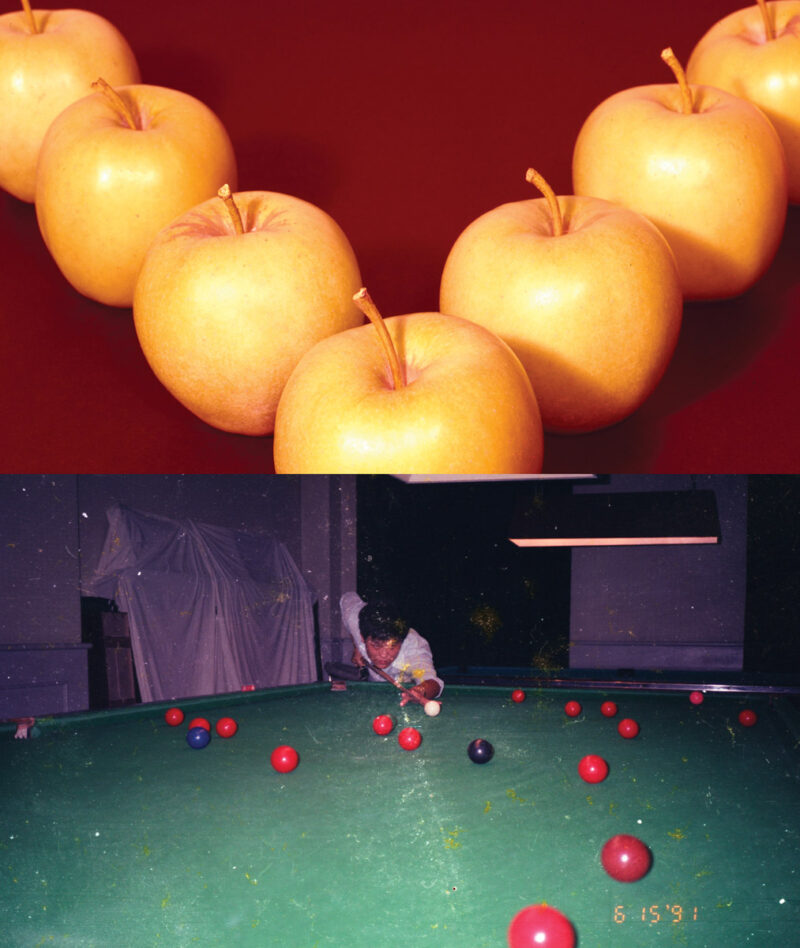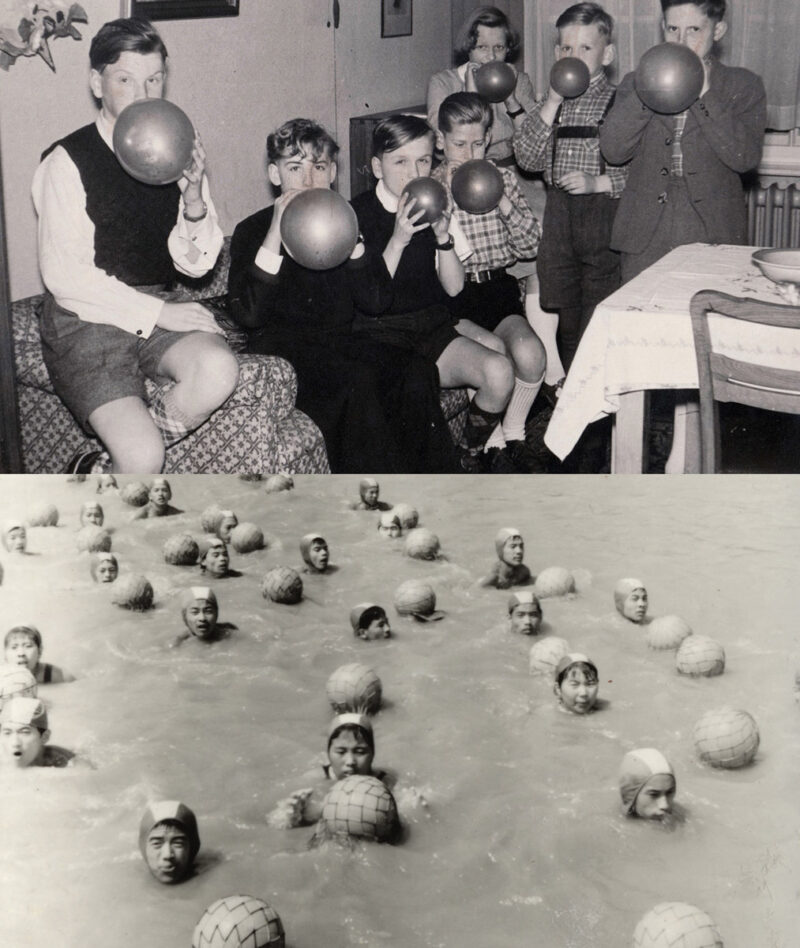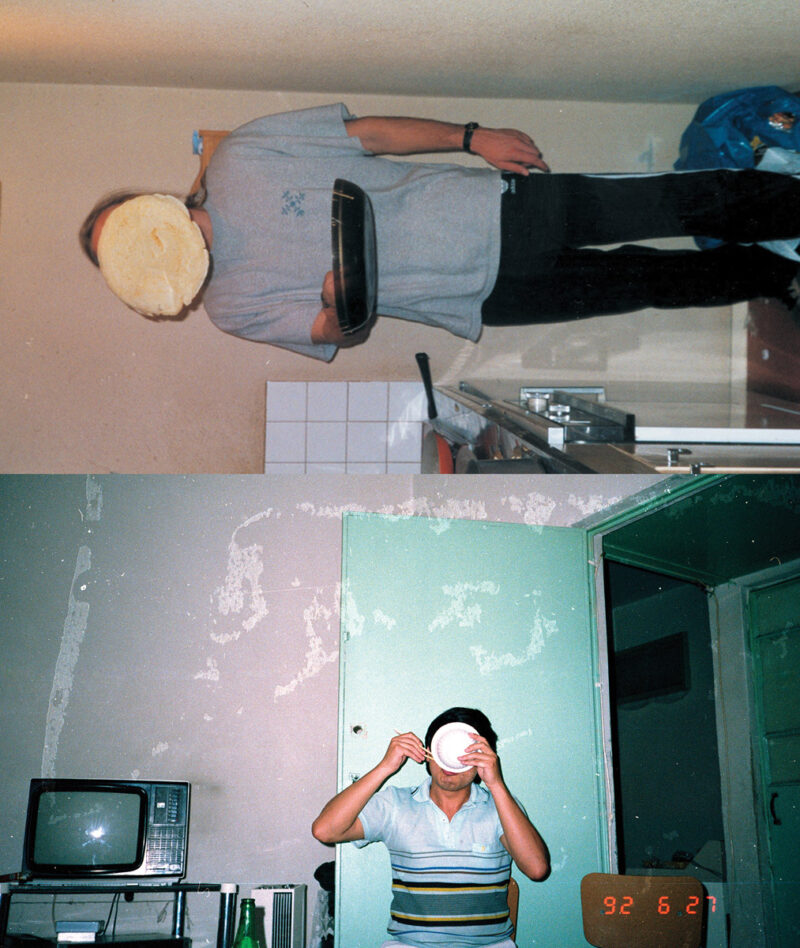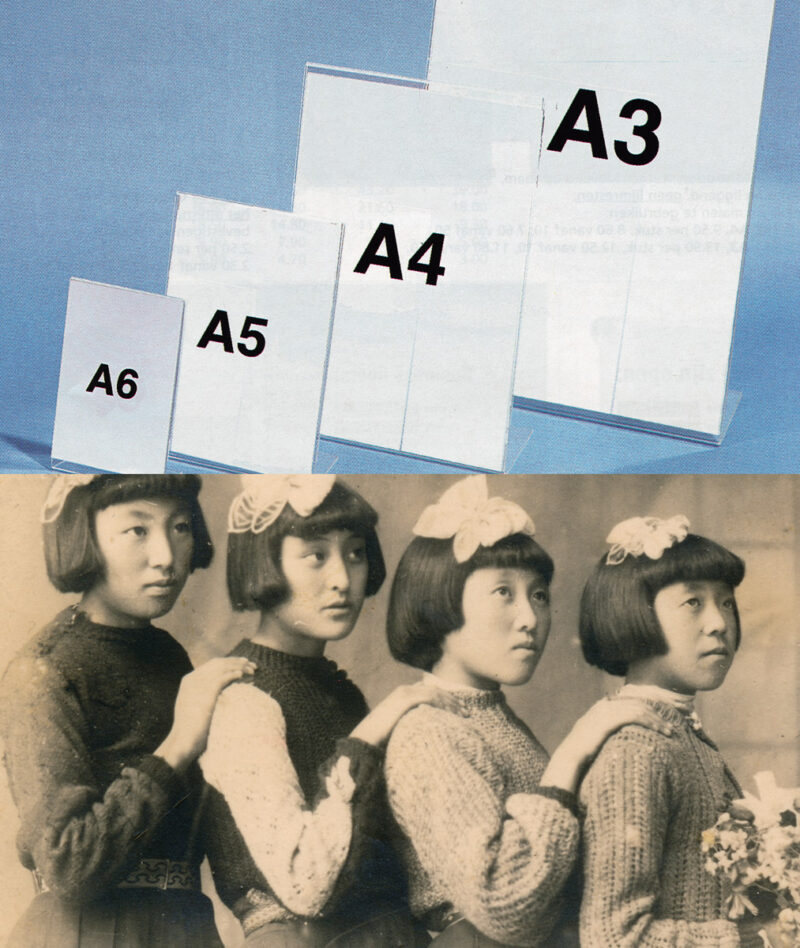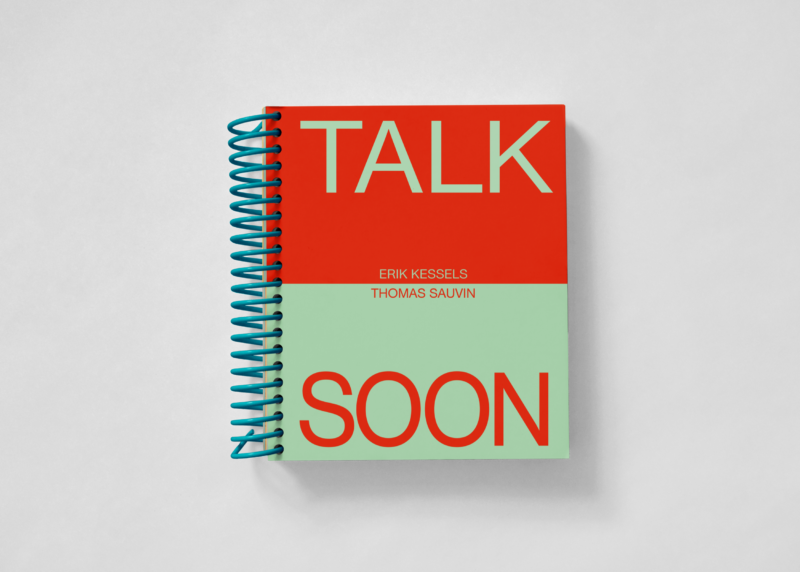Questions On is the video interview format created by C41. It consists of three simple questions addressed to our network of friends, partners and creative minds.
This series will go through Printed Narratives, questioning the role of contemporary publishing in the digital era. This episode features Erik Kessels and Thomas Sauvin.
Erik Kessels is a Dutch artist, designer and curator with a great interest in photography. He’s Creative Partner of the Communication Agency KesselsKramer since 1996, in Amsterdam and London. Kessels has published over 75 books of his “re-appropriated” images and has written the international bestseller Failed It!. He was «a visual sorcerer» by Time Magazine and a «modern anthropologist» by Vogue (Italia).
Thomas Sauvin is a French collector and artist who works mainly with found imagery. He has salvaged discarded negatives from a recycling plant on the edge of Beijing, avoiding them to be destructed. His Beijing Silvermine archive now encompasses over 850000 anonymous photographs. The work has been exhibited worldwide, while providing a visual platform for cross-cultural interactions and impacting our collective memory of the recent past. Sauvin published 10 artist books, becoming part of the collections of the TATE, the V&A, the Bibliotheque Nationale de France and the Pompidou Museum.
Talk Soon is the wordless quarantined dialogue between the two artists. Every day, throughout that tumultuous spring of 2020, Erik and Thomas sent one another idiosyncratic, uncaptioned photographs; catalysing an organic, free-associative exchange of some 120 archival images. Atelier Éditions’ author Kingston Trinder then composed an equally free-associative, altogether-whimsical narrative with which to further entwine the duo’s eclectic photographs. These two archives of vernacular photography, one from the East, the other from the West, achieve a dialogue through the recurrence of photographic practices, aesthetics, and subjects. Talk Soon, a tearaway postcard book, allows readers to endlessly juxtapose the delightful photographs selected by the two quarantined artists. They can create nonsensical narratives, unexpected sequences, and entertaining tableaux by turning each colourful page. And the wholesome family fun need not end there. Readers can mail-out these wonderful photographs to loved ones, and produce their very own, one-of-a-kind, Talk Soon exchange. Or, tear out all the cards to recreate the original exchange sequence, then turn the cards over to reveal an abstract tale.
How did you develop the project? What is the link between the images?
EK: Hello, my name is Erik Kessels, I am an artist from Amsterdam, in the Netherlands. Today I’d like to talk a little bit about a project I did last year, 2020, with Thomas Sauvin. He’s an artist from Paris. First we both worked with found imagery and re-appropriation, so we have a rich visual archive. Last year, when the world came to a kind of standstill – and of course both of us also were in our homes, not doing what we normally did (because normally we collaborate together in festivals, we used to see many people, having the same interests, the same fascinations and obsessions, but this stopped that moment so…). I started this project by sending Thomas one of my images, which is this one, a parked car, and I just asked him to respond to this with an image from his archive, or collection, which he did, and this resulted in a kind of wordless dialogue of a few months, in which we sent 60 images to each other by just reacting on the previous image that the other one sent. I think it was very important for us to keep doing this because it kept us fresh and it was also a game. In the end, there was never the idea to make a publication, but for us it was a very nice game. With the book, we’d just like people to play the same game. In total there are 120 images in there; in the book they are in order, but you can take the images out and then play the game yourself. So everybody gets 60 cards, and then you can see if you can reconstruct in a way our conversation.
TS: My name is Thomas Sauvin. I am now based in Paris, but I spent about twelve years in China, where I built a collection of found photography. This is a passion I share with Erik Kessels. At the very beginning of the lockdown, in 2020, Erik wrote an email to me saying «I’m getting bored out of my head, must be the same for you. It could be nice, in these boring times, to start a stafette with images together. I send you an image and you react to it with another image. No words». We did that for about one month and a half and it ended up with a visual dialogue of 120 photos, 60 from Erik’s collection and 60 from my collection. A dialogue with found photographs from the East and from the West. The link between the images can be different. It can be the scene, the colour, it can be something that appears in the photo or even the reason why this type of photo exists. With our collection, we both witnessed a lot of photographic practices and we realised that humans have a lot of shared habits. As a result, these images can talk to each other in quite a smooth way.
Are «quarantine postcards» an unsettled paradox? Is there a meaning in nonsense?
TS: No, it actually felt quite natural to do this. Everything was cancelled. The photo fairs, the festivals, the exhibitions we could have, the travels… We like to collaborate, we like to do things together, we’re part of a community, right? At that time we couldn’t travel, we couldn’t do the things we used to do, so it felt like it was the right time to actually engage in a long-distance conversation. That’s something we started before, in a way, with Erik sending each other’s photos and doing this kind of ping-pong, but that was the right time because we were locked – him in Amsterdam, me in the countryside in France. We just had a lot of time, the digital version of our archives and eventually our minds. So we started exchanging things. It’s interesting to notice that this book is actually a collaboration with many people, in many countries, and it was all made with distance. First of all, Erik and I had this visual conversation via email, over a period of one month and a half. Once this was done, the selection of one-hundred and twenty photos was given to Atelier Edition – a publisher based in Canada. This publisher worked with a designer who is based in Germany and this designer, with the publisher, decided to print the book in Italy. So all that happened without any physically meeting at any time.
Publishing could be seen as an anachronistic practice. Why do you think it could still have a role in shaping contemporary visual culture? Is printing a way to return images to where they belong?
TS: Well, trying to answer that question simply, I would say that now we’re all completely submerged by images, every day and everywhere. I believe, as collectors and artists, Erik and I don’t really find an interest in creating new images, but what we try to do is rather to sort through photographs that already exist in the world and make them visible in a different way by actually providing them with a new context. Photo books just feel like the perfect tools to achieve that.
EK: About publishing, I think it’s quite important nowadays. There is a lot of independent publishing going around and – especially for creative people, for visual people and for a lot of people from different creative backgrounds – it’s very important to print things again. I mean most of the stuff is anyway online, but the printed matter nowadays becomes something very interesting. Also the tactility of it and the fact that you can hold it, you can smell it… I think that publications today have the shape of a personal portfolio. In a way, you have that also online, but offline this could be always in the shape of a publication, of an artist book. I can only challenge that, because this is something very important to communicate and also to express your intentions in your work. Again a lot of things play role in this, like how do I make the book? What kind of paper do I use? What is the design of the book? And what is kind of the intention of my work and how can that work the best in a book?
Credits:
Featuring: Erik Kessels and Thomas Sauvin
Curated by Robin Sara Stauder
Editor: Alice De Santis
Visual: C41.eu
